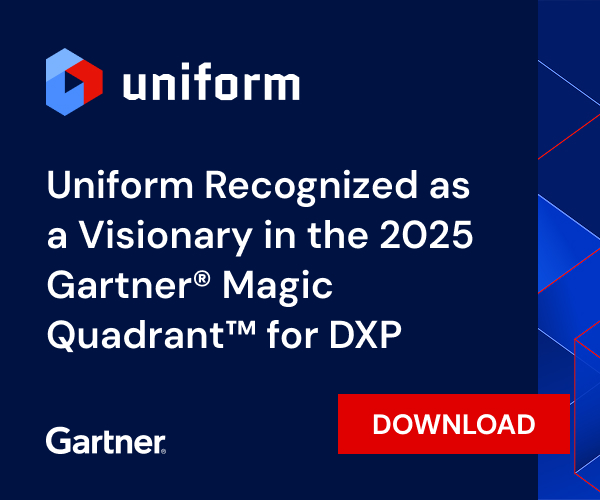Artificial intelligence (AI) continues demonstrating how digital teams can automate manual tasks, increase productivity, and accelerate digital experiences with fresh, quality content.
However, AI is also transforming the
content management system (CMS) migration process, drastically reducing the effort and price tag of moving from one system to another.
Read on for highlights from the conversation, from common migration challenges to how Uniform and RDA help companies improve their migration journey through AI-powered automation and modular architecture.
Even with extensive planning and a sizable budget, several factors can derail your
CMS migration: time, cost, complexity, lack of
governance, and more.
Above all, organizations are under tremendous pressure to move quickly in response to fast-changing industry trends and market demands that reward rapid delivery and efficiency.
“They're being bombarded with this demand for
speed,” said Solomonson. “And yet they've inherited maybe a lot of tech that doesn't allow for that.”
With deep expertise in system integration, strategy, and analysis, RDA sees many organizations stuck in a paralysis by analysis. As a result, companies are afraid to jumpstart meaningful initiatives due to vendor lock-in and restrictive roadmaps.
Solomonson pointed to other barriers that prevent brands from migrating their CMS:
- Outdated platforms: Legacy platforms pose technology constraints, risking system failure and personnel concerns.
- Security, change management, and governance problems: Inefficient processes and a lack of technical oversight can stall decision-making and lead to quality control issues, especially during the adoption of AI and composability.
- Vendor lock-in: Relying on one vendor for innovation and direction poses strategic risks, including vendor-dictated roadmaps that leave little room for flexibility or adoption of best-of-breed technologies.
While these barriers might seem intimidating, AI, combined with a modular approach to migration, enables organizations to better manage and scale their migration project.
With
research showing that the majority of data migrations fail or exceed their budgets, manual migrations are riddled with potential pitfalls. Leveraging AI in
composable digital experience platforms (DXPs) like Uniform can help overcome these obstacles, enabling you to:
- Minimize your brand and digital teams’ upfront investment.
- Eliminate manual effort and errors.
- Speed up the front-end side of the migration process.
AI and composability remove much of the grunt work, said Solomonson, which cuts migration times and alleviates the pain points of
replatforming significantly.
“We really like Uniform, because you can incrementally bring value back to the business. And where you're innovating with AI and
composability, it's driving out a lot of the risks that we see upfront and being able to deliver even faster,” said Solomonson.
With AI embedded throughout their operations, he added, RDA can increase efficiency, confidence, and validation in migration projects, from writing code to deploying applications. “Being able to automate is bringing that last bit of governance and validation to the final product.”
While AI streamlines the front-end side of migration, a layered migration allows you to gradually transition your stack while reducing dependency on your legacy platform. By prioritizing critical components first, you can make incremental improvements and gradually reduce dependency on
older monolithic systems.
Alex Shyba, Uniform’s Chief Technology Officer, discussed how a composable solution such as Uniform supports this layer-by-layer migration strategy and how powerful
AI capabilities help automate that transition by extracting, transforming, and loading content from diverse sources.
“[Migration] doesn’t have to be a 9- or 12-month project anymore. Think in layers; think about parallel execution on those layers. You can get there a lot quicker,” stated Shyba.
By working with vendors such as RDA and Uniform, customers can build proof-of-concepts to evaluate their stack, identify high-value systems, and determine which technologies to migrate first.
“Using that type of proof-of-concept can help bring validation and tie it back to the business value that you can bring,” remarked Solomonson. “That's something we're very comfortable with, and we're excited to do that with Uniform.”






.png&w=1080&q=90)
.png&w=1080&q=90)
.png&w=1080&q=90)